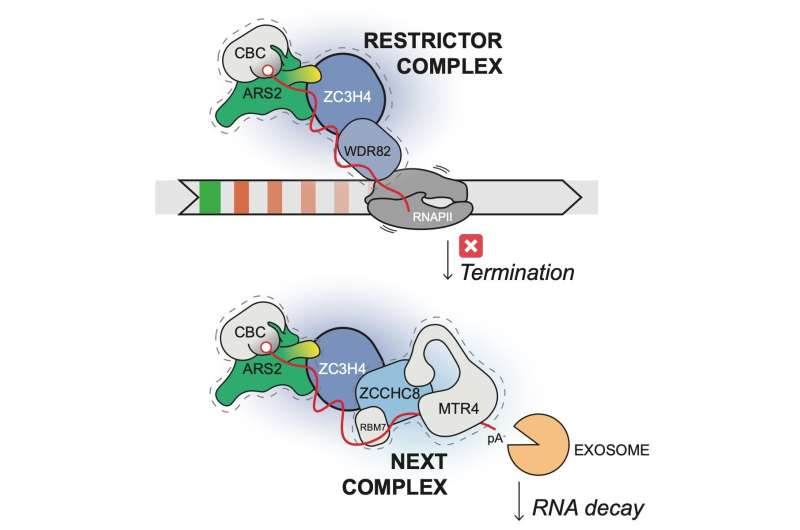This article has been reviewed according to Science X's editorial process and policies. Editors have highlighted the following attributes while ensuring the content's credibility:
fact-checked
peer-reviewed publication
trusted source
proofread
New connection between early transcription termination and RNA turnover

An international collaboration between two Danish and two German teams has delineated that the so-called "Arsenite resistance 2 (ARS2)" protein is capable of inducing early transcription termination by recruiting the termination factors ZC3H4/WDR82 via a conserved protein-protein interaction. In turn, it was found that ZC3H4 associates with the "nuclear exosome targeting (NEXT)" complex, providing access to the nuclear RNA degradation machinery.
This reveals, for the first time, in higher eukaryotes, a direct coupling between termination of a transcription reaction and the degradation of its cognate RNA product. The findings are published in the journal Molecular Cell.
Previous to the present work, the Heick Jensen laboratory had contributed to the description of ARS2 as an interaction "hub" for a wide range of proteins involved in RNA maturation and turnover. Depending on its associated factor(s), ARS2 was suggested to impact RNA "fate," determining its degradation or its export out of the nucleus. Conspicuously, however, depletion of ARS2 also displayed a transcription termination phenotype, the nature of which had remained unexplained.
So to investigate possible action mechanisms, postdoc Jerome Rouviere, set out to purify ARS2 from cells and characterize its associated protein partners by mass spectrometry (MS). Notably, the transcription restriction factor ZC3H4 was identified. Upon further investigation, Jerome could show that ZC3H4 interacts with ARS2 by means of a highly conserved "short linear motif (SLiM)", and in doing so, ZC3H4 gets recruited to chromatin.
Additional MS analysis of purified ZC3H4 complexes highlighted that the protein also interacts with the ZCCHC8 component of the NEXT complex. This dual effect of ZC3H4 in transcription termination and RNA decay presumably ensures that the useless product of the premature termination event is rapidly removed to prevent contamination of cells with excess RNA.
More information: Jérôme O. Rouvière et al, ARS2 instructs early transcription termination-coupled RNA decay by recruiting ZC3H4 to nascent transcripts, Molecular Cell (2023). DOI: 10.1016/j.molcel.2023.05.028
Journal information: Molecular Cell
Provided by Aarhus University




















